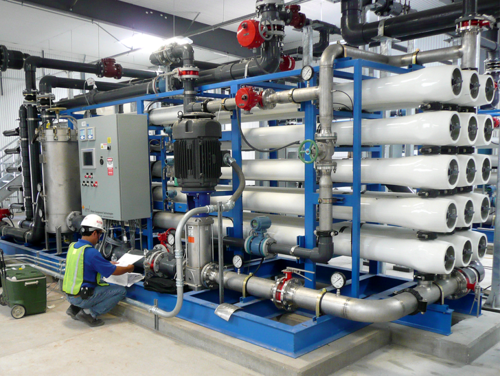M270 Waste Management: An Innovative Solution for Managing Harmful Waste
M270 Waste Management: An Innovative Solution for Managing Harmful Waste
Blog Article
Ingenious PFAS Treatment Solutions for Safer Water
The increasing occurrence of PFAS contamination in water supplies demands a critical exam of innovative therapy services. Advanced purification technologies and unique chemical treatments existing promising methods for decreasing these relentless pollutants. In addition, emerging bioremediation methods offer an even more lasting method to dealing with PFAS challenges. As governing structures remain to adjust, understanding the efficiency and scalability of these remedies becomes vital. What effects do these developments hold for public wellness and ecological remediation, and exactly how can stakeholders properly implement them in diverse contexts?
Review of PFAS Contamination
PFAS contamination has actually emerged as a significant environmental and public health concern. Per- and polyfluoroalkyl substances (PFAS) are a group of synthetic chemicals known for their persistence in the environment and human body, leading them to be typically referred to as "forever chemicals." These compounds have been widely used in various sectors, consisting of firefighting foams, water-repellent textiles, and food product packaging, mostly as a result of their water- and grease-resistant homes.
The extensive usage of PFAS has led to their detection in dirt, water products, and also in the blood of people and animals. Studies have actually connected PFAS exposure to many health and wellness issues, including developing results in infants, immune system disorder, and different types of cancer cells. In addition, the ecological determination of these compounds complicates their degradation and elimination, elevating worries regarding long-term ecological impacts.
Governing bodies are significantly applying rigid guidelines to monitor and lower PFAS degrees in drinking water and various other ecological mediums. As awareness of PFAS contamination grows, it has come to be important for communities and markets to seek reliable treatment services to minimize direct exposure and guard public health.
Advanced Filtering Technologies
As the seriousness to address PFAS contamination magnifies, progressed filtering modern technologies have arised as an essential component in the remediation initiatives targeted at eliminating these relentless chemicals from water sources. These modern technologies leverage advanced devices to efficiently target and record PFAS compounds, which are notoriously immune to standard therapy methods.
One of one of the most encouraging techniques is the usage of granular activated carbon (GAC), which adsorbs PFAS molecules due to its high area and permeable structure. This technique has actually been commonly applied in both municipal and industrial settings, showing substantial decreases in PFAS concentrations. In addition, ion exchange resins have gotten grip, specifically created to uniquely bind PFAS ions from water, thus facilitating their removal.
Membrane filtering modern technologies, such as reverse osmosis and nanofiltration, also show efficacy in PFAS removal by physically separating contaminants from water - pfas management. These systems can accomplish high levels of purity, making them suitable for alcohol consumption water applications
Chemical Therapy Developments
Various chemical treatment advancements are being checked out to properly resolve PFAS contamination in water products. One encouraging approach includes making use of sophisticated oxidation processes (AOPs), which utilize effective oxidants such as ozone, hydrogen peroxide, or chlorine dioxide combined with UV light to damage down PFAS substances right into less damaging materials. This approach has demonstrated efficacy in research laboratory setups, revealing prospective for scalability in real-world applications.
One more innovative strategy is the advancement of ion-exchange materials specifically developed to target PFAS. These resins can uniquely adsorb PFAS substances from water, enabling for their removal throughout therapy processes. Recent innovations have improved the performance and capability of these resins, making them a favorable alternative for water treatment centers.
Furthermore, scientists are examining using chemical representatives like persulfate and ferrous ions to enhance the destruction of PFAS in polluted water. These agents can generate chain reaction that help with the breakdown of relentless PFAS compounds.
Arising Bioremediation Strategies
Current developments in chemical treatment innovations have actually led the means for checking out bioremediation strategies as a sensible option for resolving PFAS contamination. Bioremediation takes advantage of the natural metabolic processes of microorganisms to degrade or transform toxins, making it an attractive approach for tackling consistent contaminants like PFAS.
Emerging strategies in bioremediation include making use of genetically engineered bacteria that can specifically target and break down PFAS substances. These address microbial strains are being established for their boosted degradation abilities, boosting the efficiency of the remediation procedure. Additionally, researchers are exploring the potential of plant-assisted bioremediation, where certain plant types might uptake and withdraw PFAS from contaminated soil and water.
One more appealing approach is the application of bioaugmentation, which includes introducing advantageous bacteria right into infected settings to boost the degradation of PFAS. This method can help with much faster remediation timelines websites and enhance general efficiency.

Regulatory Frameworks and Specifications
A thorough governing framework is important for efficiently handling PFAS contamination and making sure public wellness defense. The raising acknowledgment of per- and polyfluoroalkyl substances (PFAS) as environmental toxins has motivated numerous government and state firms to establish requirements that regulate their existence in water supplies. The U.S. Epa (EPA) has established wellness advisories and is pursuing setting enforceable limits for PFAS in drinking water.
State-level laws differ dramatically, with some states taking on stricter guidelines than those recommended by the EPA. These guidelines usually consist of maximum contaminant degrees (MCLs) for details PFAS substances, tracking requirements, and reporting commitments for water energies. Additionally, arising structures concentrate on the remediation of infected sites, emphasizing the demand for efficient treatment technologies.

Verdict
To conclude, the advancement and application of innovative PFAS therapy options are important for addressing the prevalent problem of water contamination. Advanced filtration modern technologies, chemical therapies, and arising bioremediation methods collectively offer a diverse approach to properly minimize and break down PFAS levels. As governing frameworks proceed to advance, incorporating these technologies will certainly be necessary to protect public health and bring back the integrity of polluted water sources, eventually adding to a cleaner and more secure atmosphere.
Report this page